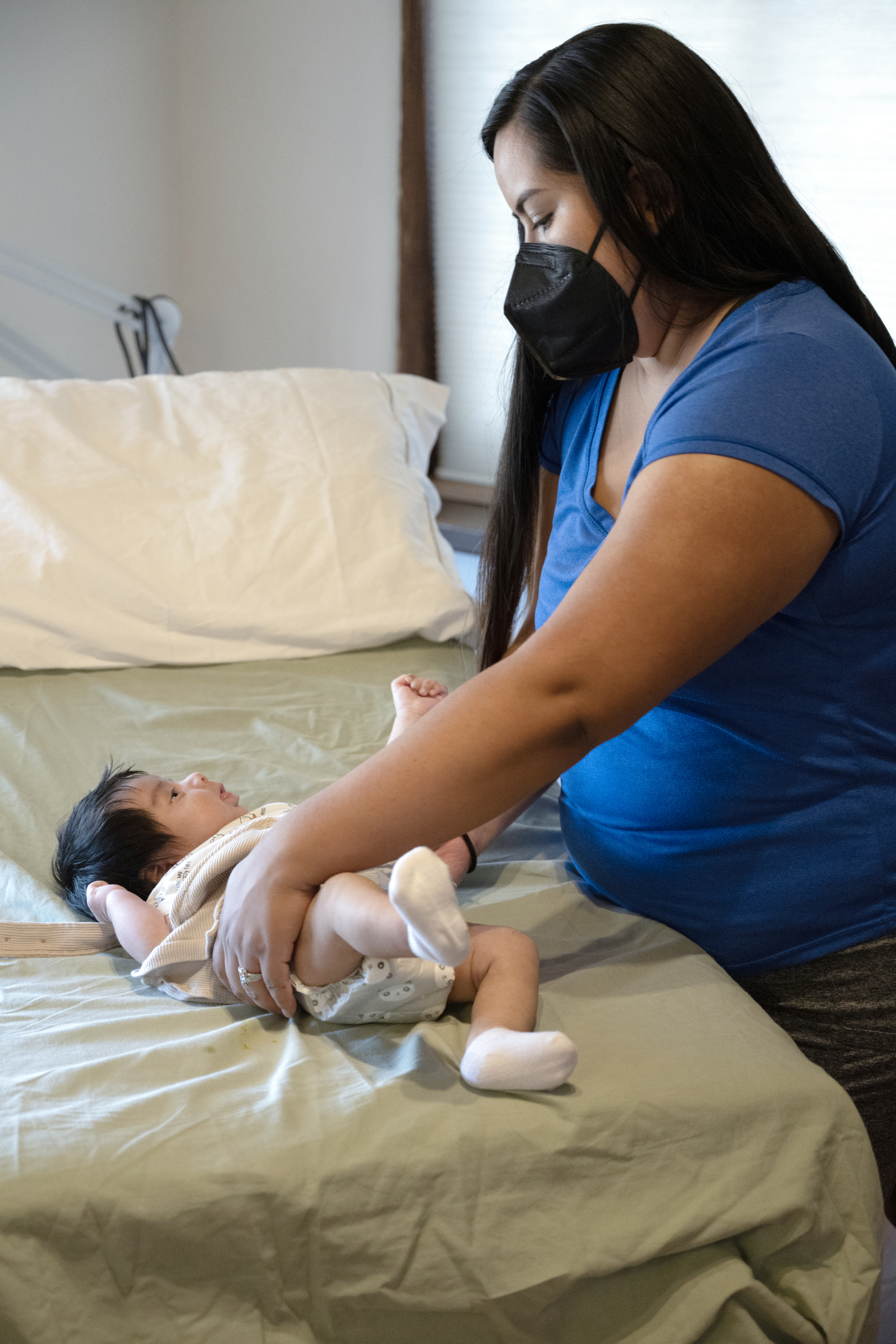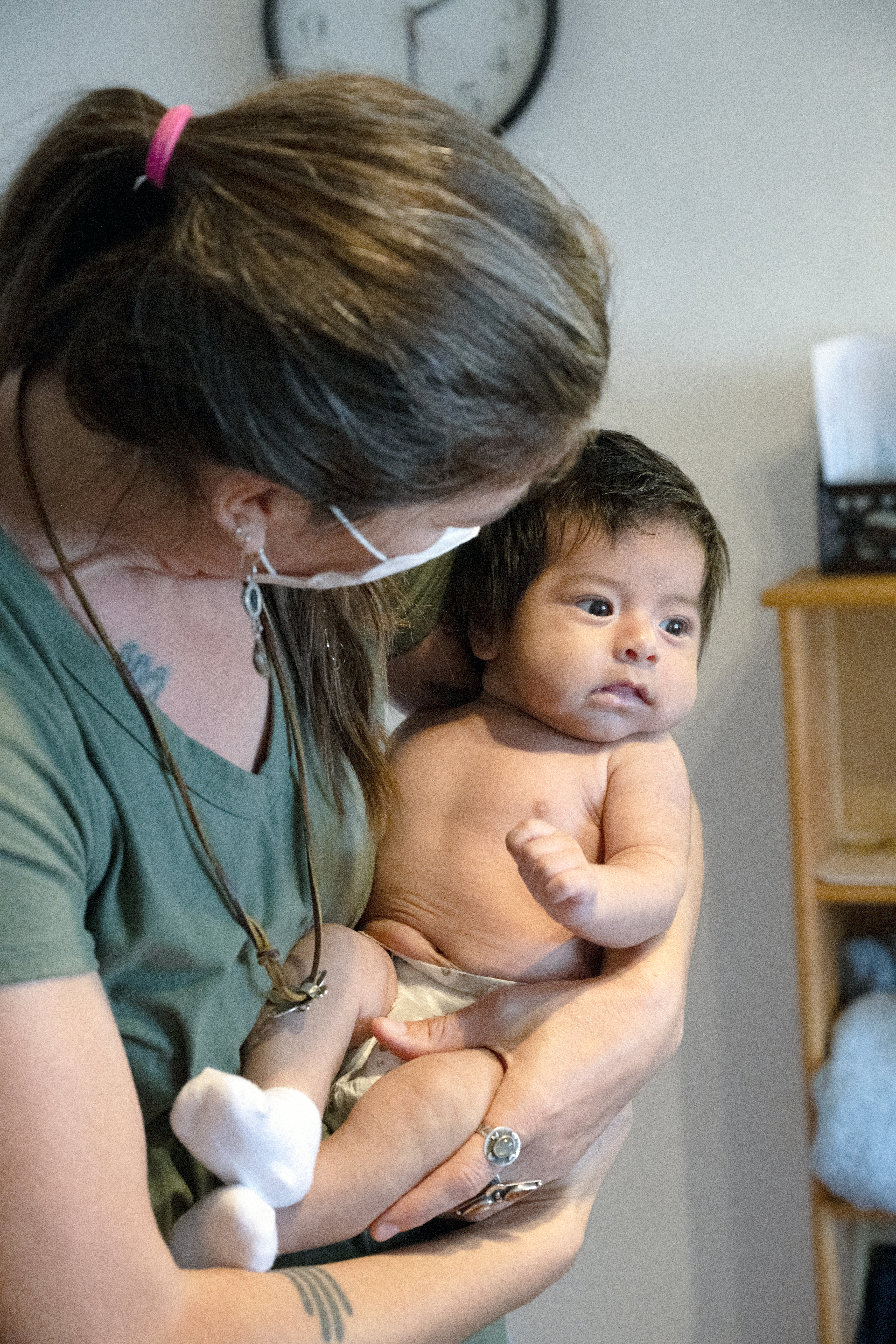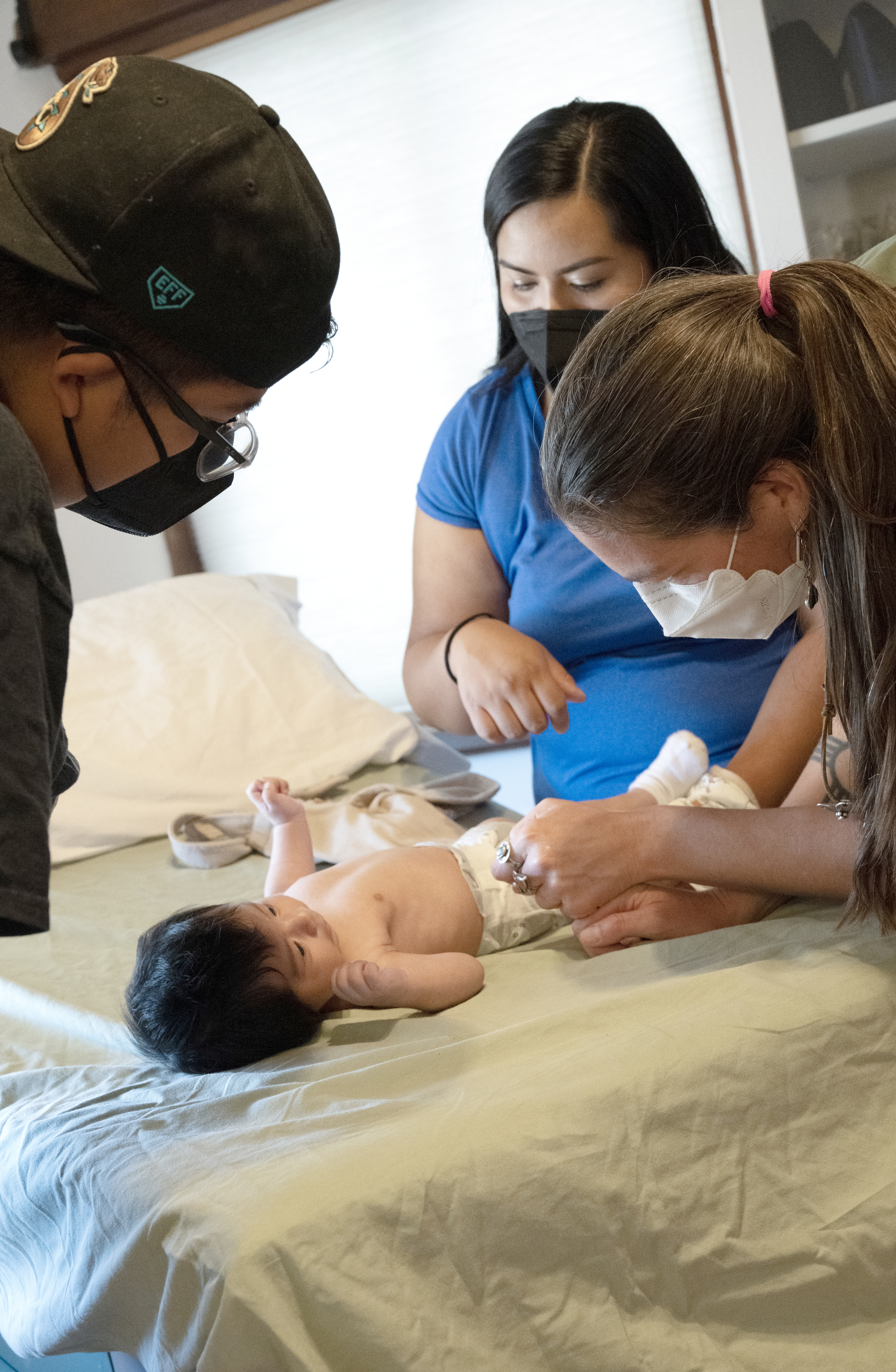Governance, Essay
Reclaiming Birth Sovereignty

Maymangwa Flying Earth & Nīa MacKnight
Nov 14, 2024
For Indigenous people of this hemisphere, prior to colonization (and continuing today) we had intricate forms of governance rooted in values, tradition, spirituality, and community wellbeing. Most likely these systems of governance had little to do with pregnancy and birth. With the onslaught of the formation of what is now the United States, however, Native people resist, grapple with, and adapt colonial governance systems in order to exist on our traditional lands. The ways governments intercede is undoubtedly foreign to most Indigenous peoples whose external systems did not regulate such personal processes.

The United States is currently experiencing a maternal health crisis, and high maternal mortality rates disproportionately impact BIPOC communities. Rural Indigenous birthing people experience the highest combined rates of maternal illness and mortality. Brandy Barraza and her newborn son, Eren Eustace, traveled with their family an hour from Cochiti Pueblo to visit Breath of My Heart Birthplace in Española, New Mexico for a six-week postnatal check-up. Birthplaces led by Indigenous midwives, such as Breath of My Heart, can significantly improve health outcomes for local, tribal communities by providing culturally competent care. However, many Indigenous communities continue to rely on Western medical services due to state laws and licensing requirements that regulate access to traditional sources of reproductive care.
Birth in the United States is heavily regulated by multiple and intersecting government entities, from the provision of reproductive health-care services to health-care providers who oversee the birth process. Due to overt governmental regulation of birth and birth workers, for Native people, the intersection of three different governments (Tribal, state, and federal) renders this issue complex. Most tribal governments today do not regulate reproductive health care nor do they keep their own vital records departments that document births. Rather, most reproductive health care is overseen by either the federal or state governments through Indian Health Service (IHS; itself controlled by the federal Department of Health and Human Services), its contracted health facilities, or through private access to other health systems.

Breath of My Heart Birthplace was founded by local midwives and community members in 2010 to serve the needs of local families in the Tewa basin. Belin Marcus, Midwife & Clinical Director at Breath of My Heart, describes: “Part of what has happened in New Mexico is that Indian Health Service used to have maternal health in the system, but that has been taken out of the hospital at IHS. They have a family practice provider who caretakes pregnant people throughout pregnancy up to 28 weeks gestation. Then at that week, they say, you need to find a place to birth. They’re referred more often to hospitals than to birth centers. Part of midwifery is having that relationship between the provider and the clients, and when we aren’t able to access them they’re not able to access us in the immediate pregnancy.”
The first health care provided to Native people was through military doctors and clinics in the early 1800s as laid out through treaties between Native nations and the federal government. Although the U.S. provided subpar health services to Native people throughout the 1800s and early 1900s, what we now know as the Indian Health Service was not organized until the 1950s. Indian Health Service and its expansion as the primary health-care service for Native people has only been in place for the last 75 years. In that time, birth has been put into IHS hospitals or more commonly, hospitals outside of our communities.

Belin Marcus reflects on her journey in becoming the first licensed Native American midwife in the state of New Mexico: “Before I had my daughter, I observed that we lost a lot of our traditional midwives in the Pueblos and surrounding areas here. When I became pregnant with my daughter at 21, I looked for a midwife and came up against a wall. I didn’t know that there was a birth center in Taos, and there were out of hospital midwives there. When I would ask people, nobody knew and it was hard to access information. One of my inspirations was to help reseed midwifery in our tribal communities in New Mexico. I learned along my journey, that in the early 1900s there were over 1,000 traditional midwives in New Mexico, and by the 1950s there were less than 100 traditional midwives, and that all had to do with regulation.”
The U.S. colonial system has systematically harmed Native people in a multitude of ways, including disrupting how we birth, forcing sterilizations, and stealing children to attend boarding schools. Through the regulation of medicalized health care, birth was stolen from midwives and traditional knowledge keepers and placed squarely in the hands of Western-educated doctors with little to no knowledge of Native birthing practices. There is now an emergence in the United States, especially in Indigenous and Black communities, of an effort to restore the care of birth to midwives through community-led birth centers and clinics. One example is Breath of My Heart Birthplace, established in 2010 in Española, serving the surrounding communities, including the eight northern Pueblo communities in north-central New Mexico. This Indigenous-led birth center provides a community-care model in which midwives honor the ceremony of birth through compassion, patience, and holistic care of the pregnant person and their family.


Although many Indigenous midwives have retained, reclaimed, and maintained their birth knowledge, they are forced to decide how they must interact with the various governmental systems in order to continue to serve their communities. In the United States where midwives are categorized as health-care providers, midwives must establish their licensure to practice. The licensure requirements vary from state to state. Currently, tribal governments are not actively addressing the matter of governance over midwives who practice within tribal lands. Rather, most Indigenous midwives who assist with birth on tribal lands do so with licensure from the states. More importantly, Indigenous midwives must decide how to interact with governmental regulations that ultimately do not align with how they provide care for their community.

James Eustace, Brandy Barraza, and their midwife, Dorothy Kaeck, admire newborn Eren Eustace during a checkup appointment. Through New Mexico Medicaid coverage, birth clinics such as Breath of My Heart Birthplace provide home and clinic births free of charge to families that are eligible. Prenatal care, birth care, and postpartum care are also covered within six weeks postpartum. However, reimbursement through Medicaid presents financial challenges to midwives. Kaeck states: “midwives struggle with Medicaid reimbursements at a much smaller percentile than what a full global fee would be. So midwives that do accept Medicaid are taking a hit in their fee, and sometimes it is really hard to get paid by Medicaid. You might do a birth and you never get paid for it, medicaid will deny it or there's different hoops to jump through in order to get paid.”
At Breath of My Heart, midwives cultivate a relationship with each pregnant person to create trust that will assist the midwives and birth workers in honoring the pregnant person throughout the birth journey. A pregnant person who receives care at Breath of My Heart has the opportunity to be surrounded by family and loved ones during each visit with the midwife. To the extent possible, a pregnant person is able to have a much less intrusive birth experience than they might have in a hospital system. Additionally, a pregnant person and their newborn baby can receive care up to two years after the birth. This wraparound holistic care approach is what makes Breath of My Heart appealing and most culturally aligned to those in the community who want to restore traditional birth practices.

Brandy Barraza is from the Tesuque Pueblo, and her birthing partner, James Eustace, is from the Cochiti Pueblo, where they currently reside with their children, Eren and Andrea. They traveled miles to attend a postpartum and infant check up appointment to meet with their midwife at Breath Of My Heart Birthplace in Española, New Mexico. In addition to providing affordable care and a free weekly food distribution, Breath Of My Heart Birthplace hosts a weekly support group for local young parents from the Española Valley and surrounding communities. Director and Midwife Belin Marcus explains that “those sitting at the table that make these laws, rules and regulations are not from our villages. Slowly, we are making our way to the tables.”
The United States is experiencing a maternal mortality crisis at staggering rates, especially for Indigenous people. Indigenous people are 2.3 times more likely to die from pregnancy-related causes as compared to white, non-Hispanic people


Birth is a universal truth for all human beings; it is the beginning of our human journey on Earth. It is vital to our reclamation of knowledge, spirit, and sovereignty that we, as Indigenous people, center the importance of birth, midwives, and birth knowledge keepers. We must increase access to culturally congruent reproductive care, break down the barriers for Indigenous midwives to serve our communities on our sovereign land, and transform reproductive governance to be in alignment with Native wisdom and values.

Jasmin Castillo holds selaginella lepidophylla, commonly referred to as the resurrection plant, a plant native to Mexico and the Southwest region of United States that is revered within traditional birthwork practices. Castillo grew up in Los Angeles and is descended from the Xela lineage from Guatemala and the Pipel from Sonsonate, El Salvador. After learning from experienced midwives based in both Mexico and California, their practice integrates the use of traditional techniques and textiles from Latin America. Castillo states “My teachers always told me to greet the ancestors when you're in someone’s birth circle. I show up with my Faja, my traditional textiles, and a lot of my clients will say that I remind them of their grandmother.”
1
Kozhimannil KB, Interrante JD, Tofte AN, and Admon LK. 2020. “Severe Maternal Morbidity and Mortality Among Indigenous Women in the United States.” Obstetrics and Gynecology 135(2):294–300. doi: 10.1097/AOG.0000000000003647.
⏎See Also
Correction*, Essay
every pattern needs a passage

Language, Essay
Asking for Permission/Listening for Consent
